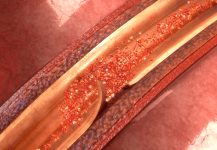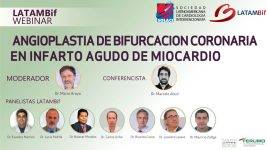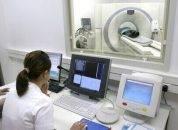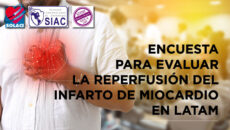Many studies have shown there is higher mortality and complications among women after acute myocardial infarction (AMI) vs. men, especially after 30 days. Even though the mechanism driving higher mortality remains uncertain, recent studies have seen differences in thrombus formation with increased platelet count among women. In STEMI patients, intracoronary thrombus burden is a predictor…
Coronary Artery Dissection and Cardiogenic Shock: How Do They Evolve?
Spontaneous coronary artery dissections (SCD) are more frequent in women and account for about 25% of all acute myocardial infarctions (AMI) before the age of 50. While the presence of cardiogenic shock due to AMI is infrequent, its evolution is still somewhat unclear and it has not been fully analyzed. Researchers conducted an analysis in…
Post AMI Ventricular Septal Defect: Contemporary Results of Endovascular vs Surgical Repair
In the era of endovascular intervention, with shorter revascularization times, we see lower rates of mechanical complications due to acute myocardial infarction (AMI). Increased rates were recorded during the COVID-19 pandemic, but driven by delays in consultation. Though occasional (with an estimated incidence of 0.2%), post AMI ventricular septal defect (VSD), or interventricular communication, involves…
Re-Watch Coronary Bifurcation Angioplasty in Acute Myocardial Infarction
You can now relive our virtual event on Coronary Bifurcation Angioplasty in Acute Myocardial Infarction. Coronary Bifurcation Angioplasty in Acute Myocardial Infarction
The Current Role of Thrombus Aspiration in Primary PCI
In general, thrombus aspiration in acute myocardial infarction (AMI) has not been shown beneficial by large studies. It could even be prejudicial, since it has been associated with stroke. However, there are certain scenarios where the presence of a significant number of these prevents us from reaching adequate TIMI flow 3, or is associated with…
Ticagrelor Shows Benefits in Coronary Microvascular Function after NSTEMI
Coronary microvascular disfunction (CMD) is an important long-term prognosis predictor. CMD treatment can be an effective therapeutic strategy for patients with acute coronary syndrome (ACS). Nevertheless, more studies are needed to assess different strategies. In the PLATO (Study of Platelet Inhibition and Patient Outcomes) study, ticagrelor vs. clopidogrel reduced ischemic events and overall mortality in…
OCT in STEMI Patients: Is It Safe to Prevent Stenting?
Percutaneous coronary intervention in patients with acute myocardial infarction (AMI) where the physiopathological mechanism is plaque erosion or non-atherosclerotic mechanisms (such as spontaneous coronary artery dissection) is not beneficial according to recent studies. The EROSION study (Effective Anti-Thrombotic Therapy Without Stenting: Intravascular Optical Coherence Tomography–Based Management in Plaque Erosion) has shown medical treatment with no…
ACC 2022 | PACMAN AMI
Atherosclerosis plaque causing AMI is often large in volume, high in lipids and have a thin fibrous cap. Statins often reduce atherosclerosis progress, but the impact of PCSK 9 inhibitors (alirocumab) after acute coronary syndrome is scarcely known. The aim of this study was to determine the effect of alirocumab using intracoronary imaging (IVUS, OCT,…
Survey to Evaluate Myocardial Infarction Reperfusion in LatAm
The Latin American Society of Interventional Cardiology together with the Interamerican Society of Cardiology (SIAC) and the Stent-Save a Life! Initiative have developed a short survey (which can be answered in less than 5 minutes) to learn how ST-segment elevation acute coronary syndromes are treated in Latin America. The final objective of this survey is…
Is Coronary Revascularization Useful in Renal Transplant Candidates?
Coronary artery disease is the main cause of death in patients with functioning renal transplant, reaching 30%, with the highest rate at peri transplant stage. At the same time, the incidence of acute myocardial infraction (AMI) after renal transplant ranges from 5% to 11%. This is why asymptomatic candidates are routinely screened for CAD before…









